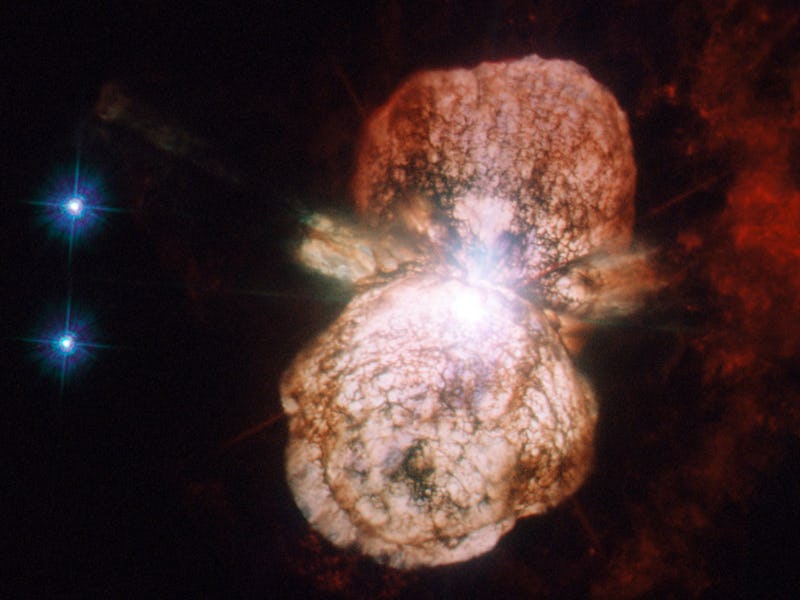Scientists Discover Five New Massive, Unexpected Exploding Stars
We're one step closer to understanding the mysteries of Eta Carinae.

The biggest and brightest stars around our galaxy may have more company than we thought. Scientists believe they have discovered five stars similar to the two stars of Eta Carinae, hitherto mysterious bodies that give off more than five million times the light as our sun and have a tendency to explode.
In fact, only 150 years ago astronomers observed the Eta Carinae, which is located only about 7,500 light years away from Earth, experiencing an explosion so intense it shot off a mass 10 times the size of our Sun. The galactic-sized detonation spewed so much dust into the surrounding area that it formed the distinctive bulbous shroud that is characteristic of these types of events. Unfortunately from an astrophysics perspective, dust and debris from the explosions actually insulate the stars, which would normally be incredibly bright, by converting the light into energy, making them much harder to spot. This makes it harder to study them, particularly why they tend to explode, so scientists went out looking for other possible examples of exploding stars.
“The most massive stars are always rare, but they have tremendous impact on the chemical and physical evolution of their host galaxy,” Rubab Khan, the lead scientists on the project, who is a postdoctoral researcher at NASA’s Goddard Space Flight Center in Greenbelt, Maryland, told Phys.org.
A group of researchers from NASA, The Ohio State University, and George Sonneborn at Goddard developed a model using optical and infrared data for what they expected these systems to look like and scanned archival footage from the Hubble and Spitzer telescopes. For three years, they found no other candidates, but in 2015 their luck changed and five new possibilities came into focus.
The first two possible Eta twins are based in the M83 galaxy, 15 million light years away, while the other three are a full 18 to 26 million light-years trek away from us. The scientists say they’re hopeful that the launch of NASA’s James Webb space telescope in 2018 will help them confirm these candidates.
Of course, if the scientists are looking for huge clouds of dust and debris, it also makes sense just to check whether it could be something else…